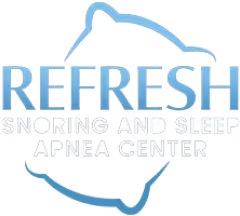Sleep apnea is a condition that disrupts your breathing while you sleep, often causing loud snoring, fragmented sleep, and long-term health risks like hypertension, heart disease, and cognitive decline. Managing this disorder typically begins with clinical solutions like CPAP therapy, but many people also explore supportive, non-invasive options. One such tool gaining interest is the sleep apnea pillow.
These specially designed pillows claim to support better sleep posture, improve comfort during treatment, and reduce snoring. But do they really help? Let’s take a closer look at how sleep apnea pillows fit into a broader sleep apnea management strategy—and when they might be worth considering.
Understanding Sleep Apnea Pillows
A sleep apnea pillow isn’t just a softer or firmer version of your average pillow. These therapeutic tools are designed with contouring, cutouts, or elevation zones that support your head, neck, and shoulders in a way that encourages open airways. Some pillows also include indents or accommodations for CPAP masks, helping users maintain proper positioning without disrupting airflow or mask fit.
The goal of these pillows is to align the head and neck in a way that minimizes airway collapse during sleep. By subtly encouraging side sleeping or elevating the upper body, sleep apnea pillows act as a form of positional therapy, a non-invasive approach to reducing apnea episodes in certain individuals.
Potential Benefits of Sleep Apnea Pillows
Improved Sleep Positioning
Position plays a major role in how frequently apneas occur. Research shows that sleeping on your back can worsen obstructive sleep apnea (OSA) because gravity pulls the tongue and soft tissues backward, narrowing the airway. Many sleep apnea pillows are designed to make back-sleeping uncomfortable or to naturally guide the sleeper into a side-sleeping position.
This form of positional therapy has shown measurable results in reducing mild to moderate OSA events. A study on memory foam pillows found that specific designs could aid in lowering apnea severity in some individuals.
Enhanced Comfort for CPAP Users
CPAP remains the gold standard in sleep apnea treatment options, but many users struggle with discomfort from the mask or tubing—especially when changing sleep positions. Certain sleep apnea pillows feature CPAP-specific cutouts that prevent the mask from shifting or pressing into the face during sleep.
This added comfort can help improve CPAP compliance, which is critical to achieving long-term results. A pillow that reduces pressure points and prevents air leaks makes the therapy easier to tolerate night after night.
Potential Reduction in Snoring
Snoring, one of the most common signs of OSA, often results from partial airway obstruction. Proper head and neck alignment—something these pillows aim to support—may reduce the intensity or frequency of snoring by keeping the airway open. While a pillow alone won’t eliminate snoring if sleep apnea is present, it can contribute to symptom relief as part of a broader sleep apnea management plan.
Limitations and Considerations
Despite the potential benefits, it’s important to understand that sleep apnea pillows are not standalone treatments. They may support better sleep posture and comfort but will not address the root causes of moderate or severe OSA.
Effectiveness varies depending on the individual’s anatomy, sleep habits, and severity of the condition. A pillow might help someone with positional sleep apnea but will likely do little for someone whose OSA stems from neurological or anatomical factors.
Always consult a sleep specialist before making changes to your treatment. Relying solely on a pillow without appropriate medical guidance can delay effective treatment and worsen symptoms over time.
Integrating Sleep Apnea Pillows into a Comprehensive Treatment Plan
Sleep apnea care isn’t one-size-fits-all. A sleep apnea pillow might offer support, but it should be part of a larger strategy. Many patients benefit from combining positional therapy with medical treatments such as CPAP, oral appliances, or lifestyle modifications.
Smartwatches and other wearable tech can also play a role. These devices track sleep stages, heart rate, and oxygen saturation, offering clues about how your pillow and overall treatment plan are working. Learn more in our blog on How Your Smart Watch Can Detect Sleep Apnea.
Continual monitoring and follow-ups with your provider ensure the treatment remains effective and tailored to your changing needs.
Exploring Alternative Treatment Options
If you’re looking for other options beyond CPAP, there are plenty of CPAP alternatives worth exploring. These may include oral appliances, lifestyle changes like weight loss, and upper airway stimulation therapy. Choosing the right option depends on your sleep study results, physical health, and preferences.
Our Get Treatment page can help you explore personalized solutions based on your diagnosis and symptoms. No matter the method, success in managing sleep apnea lies in identifying what works for you.
Conclusion
A sleep apnea pillow can be a helpful addition for many people—especially those with mild or positional OSA or those seeking greater comfort with CPAP. While not a cure, the right pillow can support proper sleep posture, reduce snoring, and improve CPAP compliance.
However, it’s essential to see it as just one piece of the puzzle. When used alongside professional medical treatments and ongoing monitoring, it can enhance your path to better sleep.
Ready to build a plan that’s as unique as your sleep needs? Start your journey today with Refresh Snoring & Sleep Apnea Center and discover how personalized treatment—pillows included—can lead to healthier, more restful nights.

.svg)




